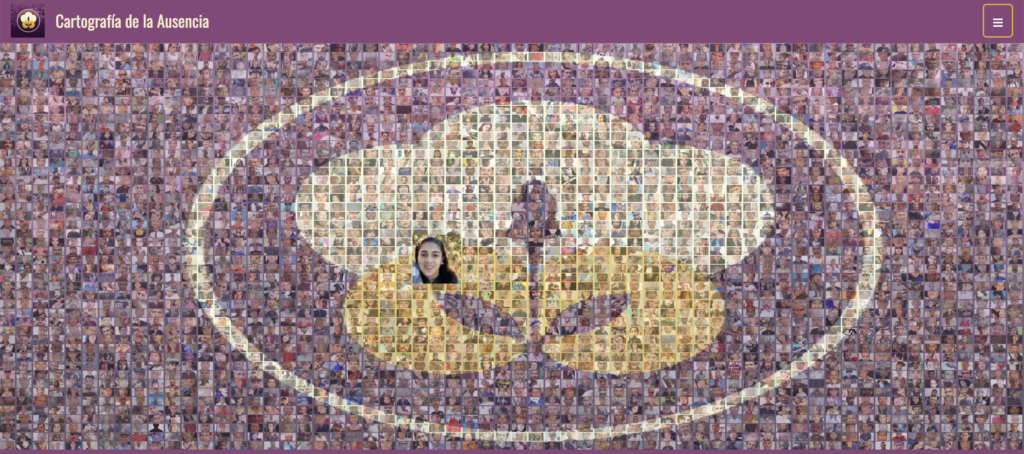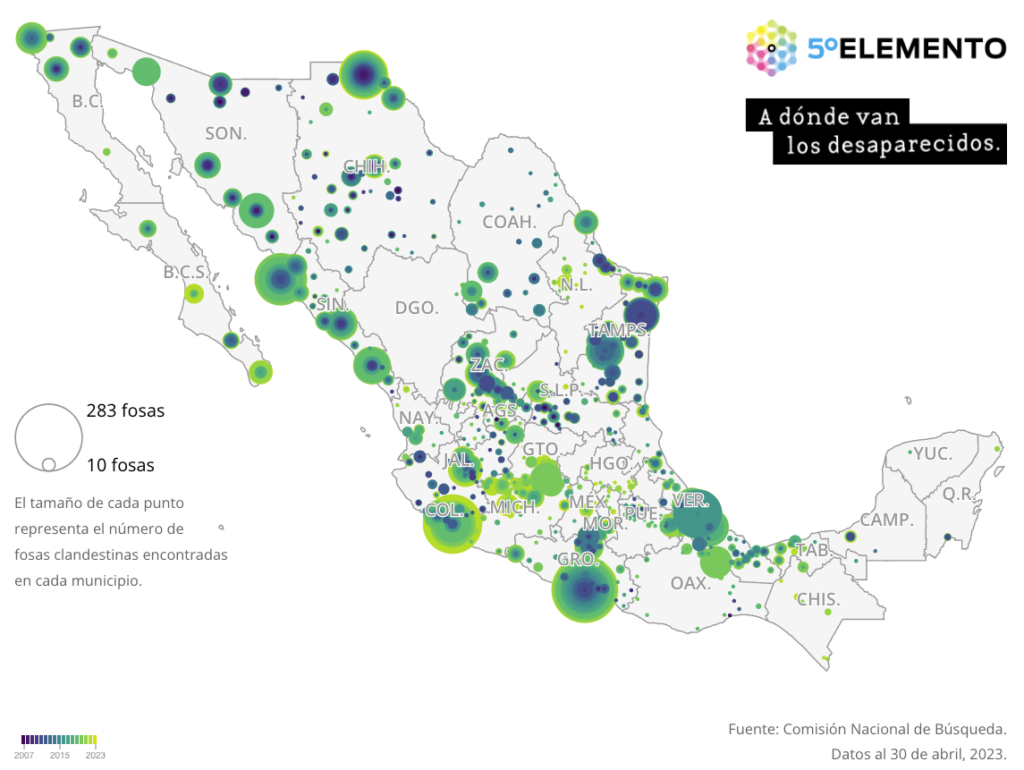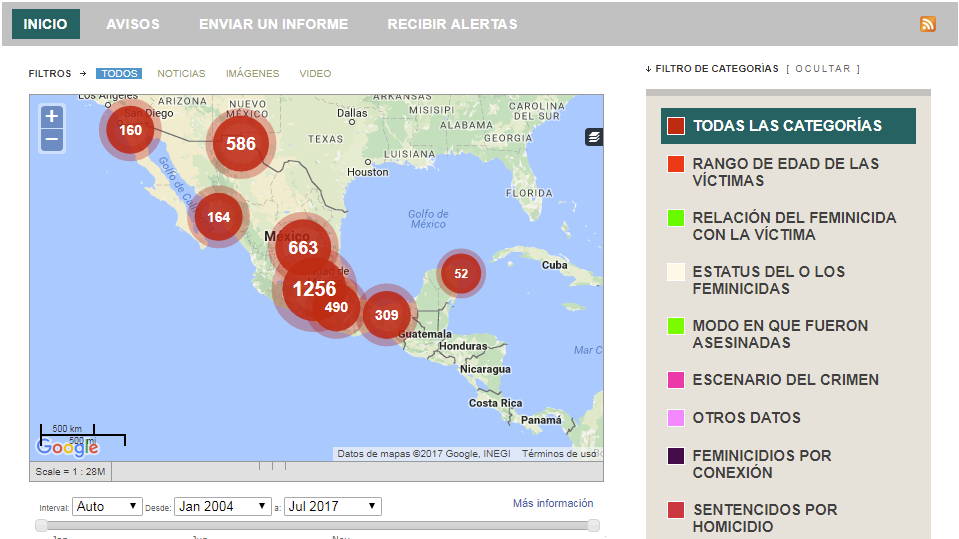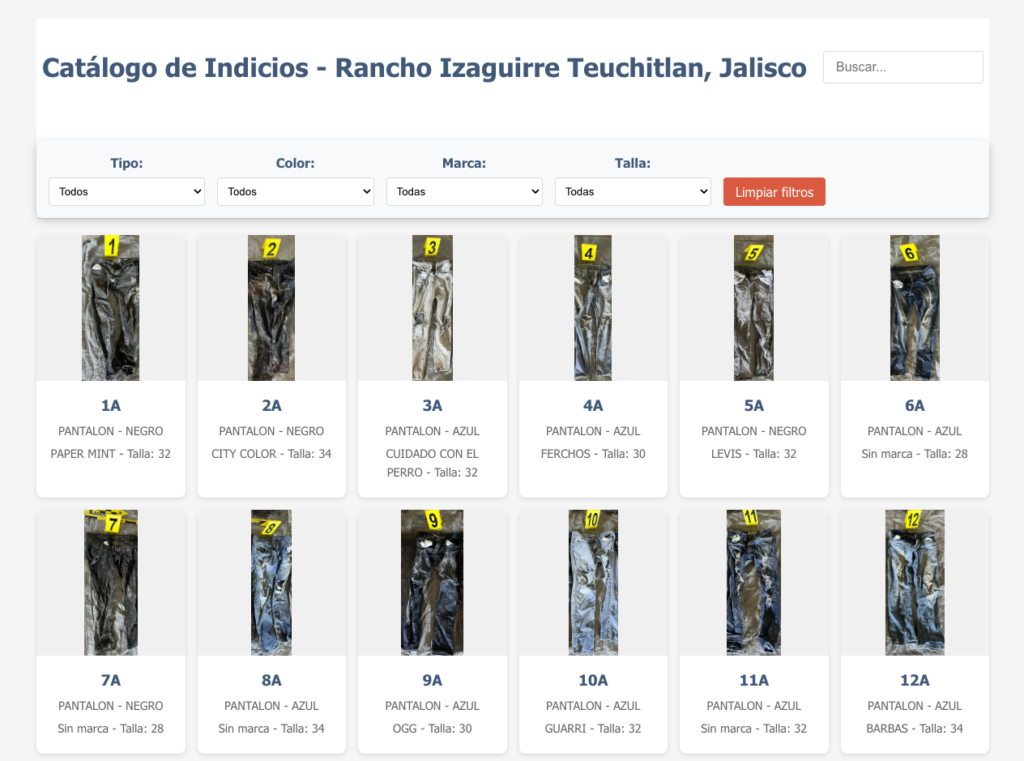“Counter-data” refers to data gathered by citizens, activists, and journalists to challenge official narratives or fill gaps in government information. It involves collecting evidence from personal stories, open records, maps, and databases. These efforts make the invisible visible.
In Mexico’s ongoing crisis of enforced disappearances, counter-data initiatives have become essential. They give power to families and reporters, helping them document the truth. These initiatives demand that authorities take responsibility for the atrocities and improve transparency.
Exposing the Horror of Teuchitlán
In Teuchitlán, Jalisco, a collective of relatives (Guerreros Buscadores de Jalisco) uncovered a horrifying discovery. In March 2025, they found evidence of a cartel “extermination” site on a ranch. They uncovered hundreds of burnt bone fragments, around 200 shoes, and other personal items likely belonging to victims. They also found three brick ovens used for cremation and a makeshift butchery room used to dismember bodies.
The families documented this shocking discovery live. The evidence forced the government to act. Authorities arrested suspects and admitted that the ranch was used by the Jalisco New Generation Cartel (CJNG) for its crimes. Journalists played a key role in validating the families’ claims. They used satellite data to show high ash concentrations at the site, confirming the evidence of cremation.
However, the families criticized the government’s handling of the site. Officials were slow to react, and the federal prosecutor did not attend. The families and independent media brought the truth to light. Without their efforts, this discovery may have been ignored.
Mexico’s Forensic Open Government Data Crisis
Teuchitlán is part of a much larger forensic crisis in Mexico. The country faces staggering numbers of missing persons. Over 124,000 people have officially disappeared. Between 52,000 and 72,000 bodies remain unidentified in morgues.
Families searching for loved ones often fear that their relatives could be among the unknown dead. There should be a national database that cross-matches unidentified remains with missing persons, but this is far from reality.
A law passed in 2017 mandated the creation of a National Forensic Data Bank (Banco Nacional de Datos Forenses, BNDF). This database would centralize DNA, fingerprints, and other identifiers from all unidentified bodies. The BNDF was supposed to be fully operational by 2019 under the Attorney General’s Office (FGR). However, it is still not functional.
In 2025, President Claudia Sheinbaum announced a new initiative to create a national forensic database. However, critics point out that this was already required by law, and the government has delayed it for years. The FGR admitted it may finish the BNDF by 2026, nearly a decade late. The delay has caused immense frustration among victims’ families.
Data (Not) Shared
Data Journalist Efraín Tzuc has highlighted the role of data in Mexico’s crisis. He argues that the issue is not only about missing persons but also about the poor management of data. Forensic institutions record critical details like scars, tattoos, and clothing found on bodies, but these records often aren’t shared or standardized. Many of these records remain on paper, making them inaccessible for families looking for answers.
Local authorities in states like Baja California have taken steps to improve transparency. For example, the state launched an online portal that shares photos and descriptions of unidentified bodies. In Jalisco, another platform was created to help families identify remains. However, these initiatives are isolated and do not connect across states. Tzuc and other experts argue that thousands of families remain in the dark without a unified national system.
Counter-Data Initiatives Holding Authorities Accountable
In response to government inaction, activists and journalists in Mexico have developed counter-data initiatives. These projects aim to fill the gaps in government data and raise awareness. Some of the projects include:
Cartografía de la Ausencia (Cartographies of absence). This platform compiles the faces and profiles of the disappeared into an interactive mosaic. It serves as both a tool for remembrance and resistance. The initiative ensures that the stories of the missing are not erased and that their names remain visible.

Mexico’s Clandestine Graves Map. This map is a joint effort by Quinto Elemento Lab and the initiative ‘A Dónde van los Desaparecidos. ‘ It charts clandestine graves throughout Mexico, exposing the alarming number of mass graves discovered since the onset of the country’s war on drugs. Utilizing data provided by the ‘Comisión Nacional de Búsqueda de Personas´(National Commission for the Search for Persons), the map marks the locations of over 5,600 mass graves across almost 570 municipalities. It has played a crucial role in highlighting the extensive violence and governmental neglect surrounding these tragedies. However, data sharing ceased in the latter half of 2023 with the appointment of the current national commissioner.

‘Yo te Nombro’ Mapa de Feminicidios (‘I name you’ Femicide Map). This grassroots initiative, led by María Salguero, tracks femicides across Mexico. Since its inception in 2013, the map has helped raise awareness of the gendered violence epidemic in the country. The map challenges official government figures, presenting a broader and more transparent view of gender-based violence in the country.

Teuchitlán Platform for Clothing Review. After the discovery of the mass graves in Teuchitlán, the activist Angel Abundis developed a platform to share images of clothing found at the site. The platform allows families to match the clothing with their missing loved ones. This initiative aims to ensure that the evidence collected is used for identification and not ignored.

The Importance of Protecting Transparency Institutions
In recent months, the Mexican Congress abolished the INAI (National Institute for Transparency, Access to Information, and Protection of Personal Data). This marks the end of two decades of progress in ensuring access to information and protecting personal data. The INAI played a crucial role in holding both public and private institutions accountable, and its absence undermines the credibility of Mexico’s transparency framework.
Even more concerning are the new constitutional reforms threatening to regress Mexico’s transparency. These reforms suggest dismantling the safeguards that protect the right to access public information. The latest proposals would transfer the INAI’s functions to various government entities, which could create conflicts of interest and lead to increased opacity.
As Andrea Poch, rapporteur for Mexico, pointed out during a recent session, the absence of independent bodies like the INAI endangers democratic processes. The reforms pave the way for a government that controls access to information and data protection. This risks further entrenching corruption and limiting citizens’ ability to hold the state accountable.
Civil society groups warn that these actions signify a loss of institutional autonomy and a setback in the struggle for transparency and justice. Maps of clandestine graves and databases of missing persons are essential tools for demanding accountability. Activists work tirelessly to uncover the truth and hold the government responsible. The ongoing quest for clarity regarding enforced disappearances shows that when authorities fall short, citizens will demand transparency to ensure the voices of the disappeared and their families are heard.
Sources:
- Dr Zoë’s Substack – What is Data Activism? (2 Oct 2024)
- El País – Altas concentraciones de ceniza… Teuchitlán hubo crematorios clandestinos (28 Mar 2025)
- Animal Político – Esperábamos que el fiscal nos diera la cara; recorrido en rancho de Teuchitlán (20 Mar 2025)
- Centro PRODH – Teuchitlán y la crisis de desapariciones: anuncios insuficientes (25 Mar 2025)
- The Guardian – Mexico: 200 pairs of shoes found at clandestine crematorium (7 Mar 2025)
- Proceso – Crisis forense: FGR incumple con banco nacional de datos (20 Mar 2025)
- Centro Prodh – A 3 meses de anunciarse… Banco Nacional de Datos Forenses sigue sin operar (28 Aug 2023)
- La Crónica de Hoy – Morir dos veces: La crisis del sistema forense en México (21 Dec 2020)
- Efraín Tzuc, A dónde van los Desaparecidos – Cruce de datos: la clave para localizar a miles (11 Jan 2024)
- FGEBC – FGE habilita sección en su sitio web para identificación de personas localizadas sin vida (5 Aug 2021)
- Instituto Jalisciense de Ciencias Forenses – Personas Fallecidas Sin Identificar “REGISTRO PFSI” (4 Abr 2025)
- Cartografía de la Ausencia – Sobre el proyecto (2025)
- Quinto Elemento Lab – México rebasa las 5 mil 600 fosas clandestinas (9 Oct 2023)
- WIRED (Español) – María Salguero… creó el Mapa de Feminicidios (18 May 2023)
- María Salguero, Yo te nombro – Mapa de Feminicidios en México (2025)
- ZonaDocs – Activista crea plataforma para revisar prendas localizadas en Teuchitlán (12 Mar 2025)
- Data Cívica – Análisis de la propuesta reforma constitucional de los órganos autónomos (Oct 2024)
- El País – El Congreso mexicano consuma la desaparición del INAI… (21 Mar 2025)
- CIDH – México: Situación del derecho de acceso a la información y la protección de datos personales (5 Mar 2025)


